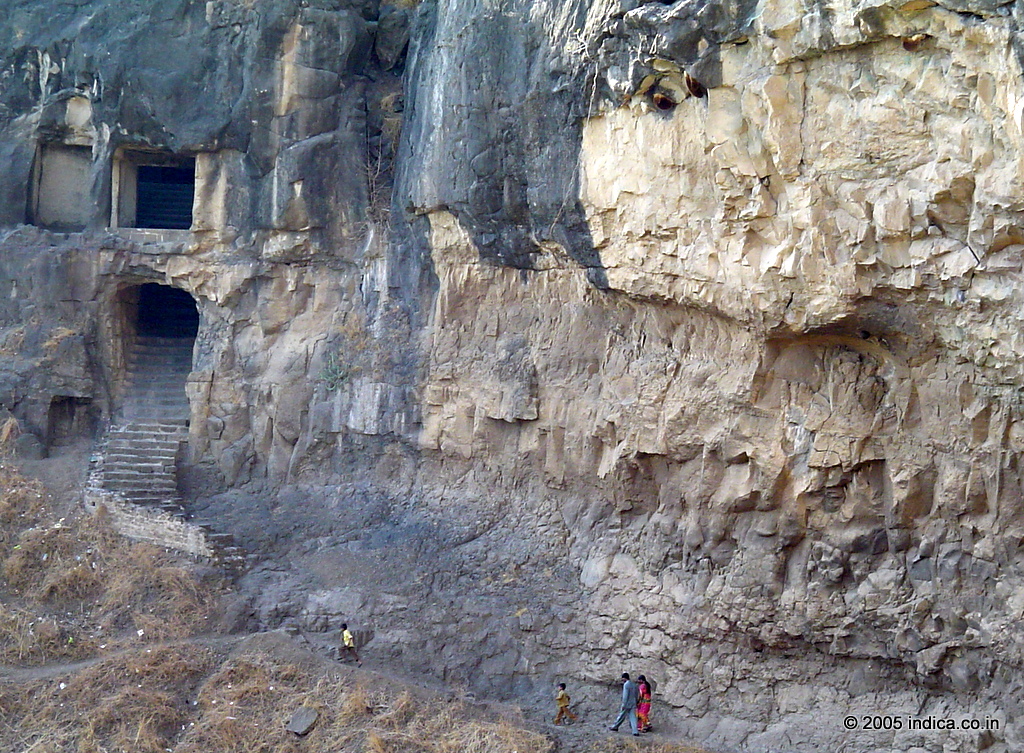Geology of Ellora
O
ne aspect a typical visitor overlooks (and the guides may not explain ) is the geological background of Ellora. In fact the most defining factor why Ellora was ever made and that too at this location is the geological peculiarity of the place.Nature had prepared the region right for rock cut architecture by the way of ancient volcanic activities. In terms of simple geography Ellora and its surroundings falls in a relatively flatter region of the mountain ranges called the Western Ghats. The intense volcanic activity that went on for many millions years in this part of the south Indian planes brought out the mineral rich rocky crust on to the surface. In the otherwise flat planes the volcano erupted and formed abrupt hilly formations. One of the lava heads is located very close to the Ellora Caves (near Cave 32).
Well, Ellora is one among the many such eruptions in Maharastra. Again the volcanic activity was periodical ( ranging for many million years ), giving rise to many layers of rock beds one siting over the other. Geologists called this basalt scrap as ”Deccan Trap”, Deccan being a term to refer south India in general and Trap often refers to the step like formations of rock.
You can easily visualize this geological feature when you see the vertical face of the Ellora hills from a distance. The may horizontal and tentatively parallel lines gives a hit of that molten lava once flowed and solidified. Even at a closeup view, you can see alternating shades of gray stripes on the walls and carvings in Ellora.
So what was peculiar for Ellora was the abrupt vertical formation of the volcanic hill on its southwest facing side. To make things more conducive ,this vertical face was formed in a terrace like pattern, making the access to various levels of the cliff easier. That happened during a geological period called Cretaceous era ( while dinosaurs roamed on earth ) .
Apart from the factors mentioned above, the rock cut architects had very specific criteria to select the sites to work on. They preferred the basalt with the finer grains over the coarser vesicular trap beds. The finer one was obviously more workable, especially for executing the sculptural details. The layers and the joints on these rocks too were deciding factors in finalizing the layout of the caves. The builders used it to their advantage to reduce the labor required in hewing the cave structures.
Another peculiarity of the basaltic scrap was its hardening property over time. The unexposed rock portions are relatively softer to work on. Once it is exposed after the hewing, the surface hardens.
Since it was made only of the natural rock, in its original position, the caves survived pretty well without much of maintenance. The only deformations was the deterioration of the surface finish, especially affecting the sculptural details due to natural erosion. Faces of many caves got damaged due to falling upper sections. Otherwise geological evaluation of the site is part of its conservation efforts.
Of the 1200 ancient cave structures in India, an overwhelming 1000 plus caves are in this region of Maharashtra. Now you know it has a geological reasoning too along with the historic backgrounds.

Note the layers of the basalt scrap at Ellora
Note the layers of the basalt scrap at Ellora
